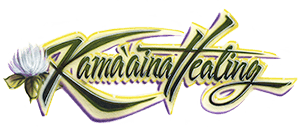Using Massage Treatment to Ease Sciatica
Sciatica is the most common forms neuritis or neuralgia, characterized by sharp pain traveling the length of the sciatic nerve. There are several indications of sciatic irritation, for instance, mumbling, shooting pain, or tangling along one side of the lower back into the leg are the common indications.
Causes of sciatica
Acute sciatica occurs as a result of displaced intervertebral disk that squeezes against the nerve root, which develops quickly after a sudden strain put on the lumber region of the spinal column. In some cases, sciatica may be confused with rheumatism. The milder condition initially causes swelling and stiffness of the leg.
The symptoms may be continuous, and you may as well feel intense pain after sitting for a very long time. Sciatica may also make sleeping impossible.
There are many conditions that can irritate the sciatic nerve, for example, lumbar spinal stenosis, lumbar herniated disc disease, isthmic spondylolisthesis, and sacroiliac joint dysfunction, among others. Despite the fact that several conditions contribute to the sciatic irritation, it can be treated effectively using physical therapy such as massage.
Massage approach
It is becoming clear to everyone that not every condition should be treated with drugs. While drugs appear to be effective in most cases, most of the drugs may cause additional damages to the body. Apart from that, it may become your custom to take drug anytime you feel slight pain. Massage approach has been proven to be very effective in managing sciatic nerve irritation.
An experienced massage therapist may be able to offer effective relief from sciatic irritation. The goal of massage therapy is to enhance circulation and better healing process, which lessen the severity of sciatica pain. However, not all physical therapists have the ability to treat sciatica pain effectively. It is important that a patient look for a massage therapist with ample knowledge of treating sciatica patients. In order to ease sciatica pain, the therapist must work on every muscle that support the region of the back affected by the sciatic nerve. So how do we identify those regions?
Listed below are the muscles affected by sciatic nerve:
- The psoas – a long and narrow muscle along the lower spine.
- The quadrates Lumborum, which is located in the lower back.
- The glutes – a collection of four muscles that constitute the buttock.
- The Piriformis – situated in the upper leg and gluteus region.
- The quadratus femoris – situated on the back side of the hip joint, and
- The hamstring muscles –situated in the thighs.
These regions should be the core targets of massage therapist, otherwise the pain will persist even after the treatment.
Applying proper massage on these regions has been proven to be very effective in relieving sciatica pain, however it is advisable to maintain the benefits after the initial session. More importantly, it is advisable that the patient does the following as a follow-up measure:
- The patient may have to make minor lifestyle changes, for example, removing your wallet from the back pocket before sitting, and avoiding prolonged sitting.
- The patients should endeavor to follow a methodological stretching routine that focus on the muscles you worked out so as to keep them loose and relieve nerve firmness
- Staying hydrated throughout the day after the massage session.
- Seek advice as regards the proper way to use ice and heat to relieve sciatica pain.
- Apply self-massage techniques, for example, sitting on a tennis ball, and so on.
Massage therapy is an effective and painless way to treat sciatica pain. When you meet a qualified massage therapist, he or she will first discuss the symptoms and the regions of the body that are affected. With this information, the therapist will begin to knead the tissue and muscles in an attempt to lose the compression placed against the nerve.
In many occasions, the therapist may focus on the Piriformis muscles, causing them to loosen and release pressure. When the muscles become rigid and remain stiff, it may eventually cut off the sciatic nerve. Applying a steady massage on the Piriformis and nearby muscles, however, can counter the pain by promoting relaxation and tension release.
Treatment of sciatica by massage therapy is accomplished by using long strokes with a reasonable amount of pressure. The amount of pressure varies based on the patient’s preference, however, moderate pressure is effective in treating sciatica.

